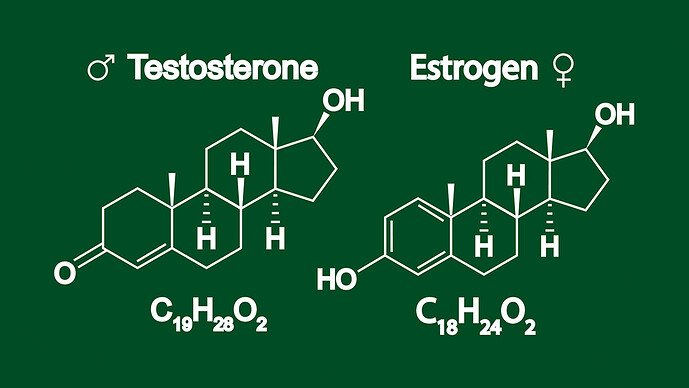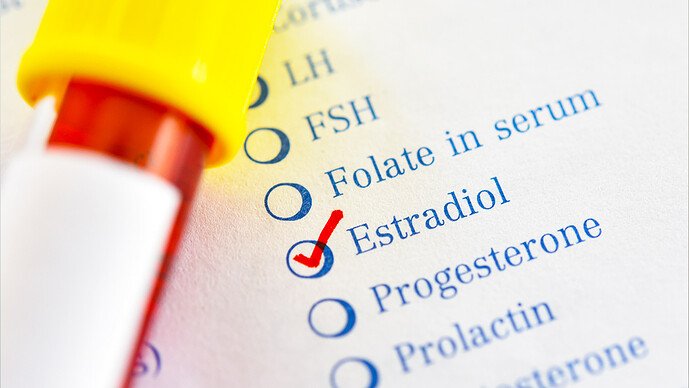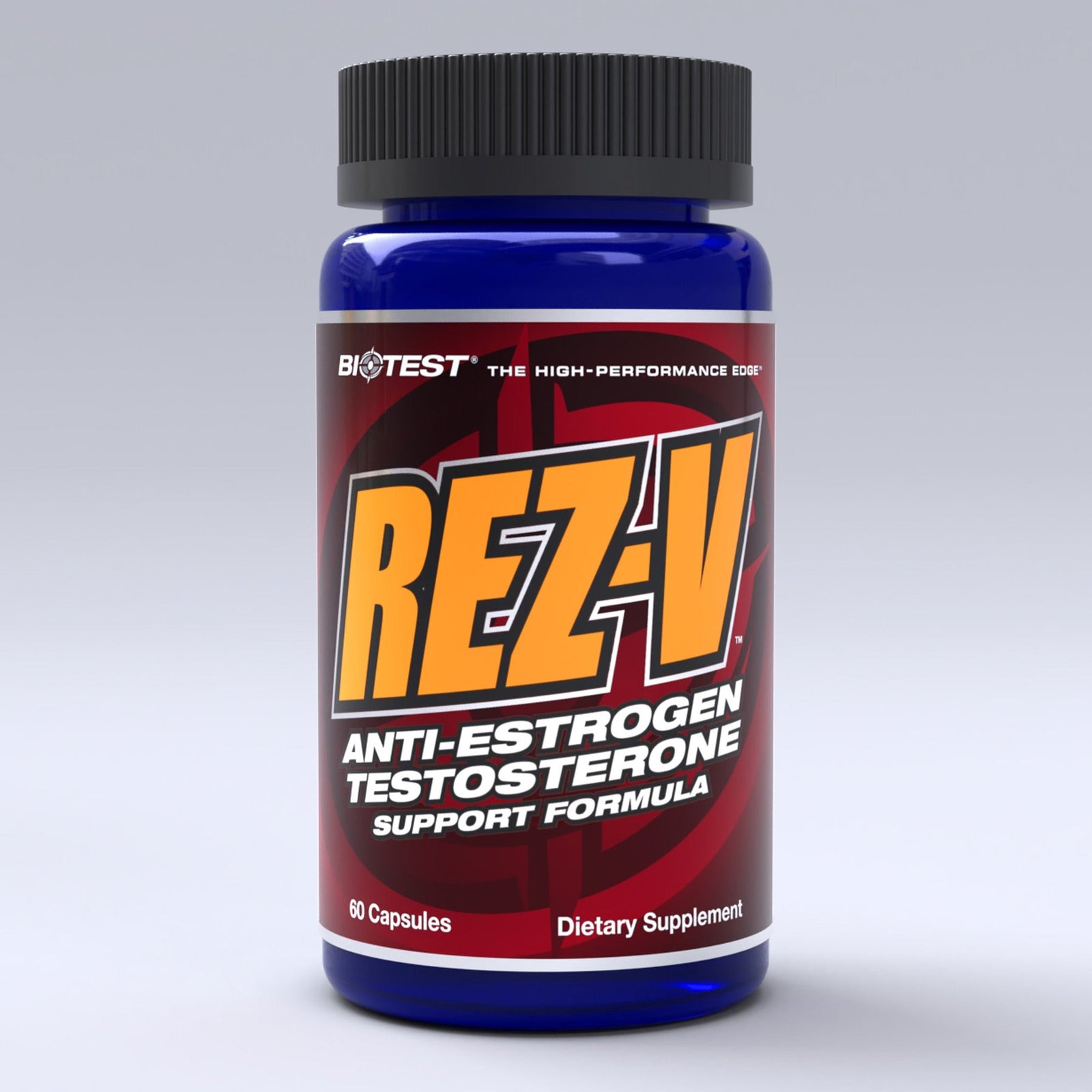What All Men Need to Know
Men need it, but if you have too much your health risks skyrocket. Oh, and you’ll be a pudgeball. Here’s how to keep estrogen under control.
High Estrogen Leads To Degenerative Diseases, Early Death
Sometimes, doctors draw the wrong conclusion from a research study. Case in point, consider the big estrogen study reported in the Journal of the American Medical Association.
Researchers monitored the estrogen levels of a large group of men. They found that men with estradiol (the most potent form of estrogen) in the normal range (between 21.80 and 30.11 pg/ml) had the fewest deaths during a three-year period. Men with the highest levels (above 37.99) had 133 percent more deaths during the same time period. However, men with the lowest estrogen levels (below 12.90) fared the worst as they suffered 317 percent more deaths.
Some doctors rightly concluded from this study that men need estrogen, but that’s when they stopped thinking and went out to drive a few balls at the range.
They figured that since men clearly need estrogen, they shouldn’t do anything to reduce the estrogen levels of men with high estrogen. In other words, many doctors ignored the far more prevalent problem of high estrogen and, as such, are loathe to prescribe anti-estrogen medications.
The problem is, once estrogen levels rise unchecked, bad things can happen.
What Happens When Estrogen Levels Are Too High?
What Happens When Estrogen Levels Are Too High?
When male estrogen levels are too high, the risk of degenerative disease skyrockets. Atherosclerosis rates go up. The incidence of stroke increases. The risk of developing Type II diabetes goes up. Emotional disturbances become more prevalent. The risk of prostate cancer increases, and erectile function suffers. Waistlines grow thicker. It becomes harder to put on muscle. And, most seriously, high estrogen significantly increases the risk of flat-out dying.
Clearly, proper estrogen levels play a big part in the health of men’s hearts, in addition to the health of a whole lot of body parts, body systems, and body functions. It’s in every male’s interest to make sure he’s in an estrogen sweet spot, regardless of age.
The Symptoms of High Estrogen
The Symptoms of High Estrogen
The average man, unaware of the true repercussions of having estrogen levels that are too high, might assume that symptoms include acting “feminine,” sounding feminine, or developing skin as soft and supple as one of those expensive Japanese love dolls. None of that is true.
For starters, high estrogen might make a man a little more emotional; perhaps prone to crying at the end of Hallmark Channel movies (or more prone to watching them in the first place), but it won’t make them want to wear women’s clothes, for Heaven’s sake.
Neither will it change a man’s voice so that he sounds like Rueben, the busboy at Melvin’s who has a voice like a nightingale. That’s because the timbre and deepness of a man’s voice is formed during puberty, and it isn’t a two-way street – it can’t reverse itself, regardless of the hormonal milieu.
(That’s also why, despite the miracles of modern surgery and endocrinology, a male transitioning to female will always be plagued by the voice they had before beginning medical procedures.)
However, there are plenty of other real symptoms of high estrogen in males:
- Increased abdominal fat
- Loss of muscle mass
- Low libido, decreased erectile function
- Tiredness
- Increased fatty tissue around nipples
- Depression, emotional disturbances
- Lower urinary tract symptoms associated with benign prostatic hypertrophy (BPH)
What Causes High Estrogen?
What Causes High Estrogen?
Testosterone gets most of the male press and estrogen gets most of the female press, but estrogen is, in many ways, just as important to men as testosterone. And, even though the two hormones are regarded as the yin and yang of human sexual behavior and development, molecularly they’re very similar.
You could even merge the two molecules into one three-dimensional figure and they’d look identical, except that testosterone has one little extra carbon atom sticking straight up from its molecular bridgework. It’s almost as if, appropriately, the testosterone molecule has its own little penis.
And in this similarity lies one broad reason why some men have high estrogen levels. Since the testosterone molecule is so molecularly similar to estrogen, it’s very easy for aromatase enzymes to Lorena-Bobbitt that one extra carbon atom off and convert testosterone to its counterpart.
That’s actually a good thing because, as explained, you need a certain level of estrogen. Not only does estrogen have innumerable effects on one’s health, but it’s also part of an elegant feedback system where overly high estrogen levels alert the testicles, via the pituitary, to send some testicular workers home and cut back on testosterone production for that day.
In this way, the system keeps a perfect amount of testosterone and estrogen flowing through the body.
Sometimes, though, too much testosterone is converted into estrogen. That amount, combined with the small amounts of estrogen being produced in the testes, adrenals, brain, and fat, can create a hormonal maelstrom of trouble. The feedback loop gets a kink in it. Estrogen levels stay perpetually high and thus keep barking the order to back off on the manufacture of testosterone.
But there are plenty of other ways estrogen levels can get too high, too, and even though it’s more uncommon and rarely discussed, low estrogen can be even more of a problem than high estrogen (signaling cardiovascular disease, autoimmune conditions, hypogonadism, etc.). Either way, though, estrogen levels need to be in the hormonal Goldilocks zone – not too high, not too low, but just right.
What Causes High Estrogen in Men?
What Causes High Estrogen in Men?
Following are several reasons why you might have high-serum estrogen levels:
1. TOO MUCH BODY FAT
Fat contains the testosterone-to-estrogen changing aromatase enzyme, so as you get fatter you convert more testosterone to estrogen, which makes you even fatter. This peculiar bit of fat chemistry is like a fat snake trying to swallow its fat tail, and the only way you can get the snake to puke up its tail is to get lean and stay lean.
2. GETTING OLD
The older you are, the more aromatase you produce and the higher your estrogen levels. That’s why old guys at the beach sometimes have decidedly non-perky breasts indistinguishable from those of their old wives.
Of course, the age and estrogen thing isn’t so cut and dried. Since levels of SHBG – a “binding” hormone – also rise with age, presumably tying up some of the excess estrogen, you’d think geezers would have less estrogen. Similarly, aging also generally brings a reduction in testosterone, which would mean there’s less estrogen because there are fewer raw materials to convert to estrogen.
Either way, it’s somewhat of a mystery.
3. FAULTY FEEDBACK MECHANISMS
When estrogen levels are too high, they signal the testicles, via the pituitary, to temporarily stop making testosterone. But if estrogen levels are perpetually high, it can short-circuit the system, sending the mistaken message to the testicles to go on a long vacation to some testosterone-free land where they laze around all day listening to soft jazz. This can, in turn, lead to even higher estrogen levels.
4. TESTOSTERONE REPLACEMENT THERAPY (TRT)
Millions of men are on TRT to revitalize their bodies and shore up their flagging libidos. Unfortunately, a lot of doctors haven’t done their homework. Injecting too much testosterone, or injecting too much testosterone into obese men, can cause an undesired amount of T to be converted into estrogen. These elevated levels need to be addressed by either adjusting the dosage or by prescribing an anti-aromatase (a drug that stops the conversion of T to E).
5. IMPAIRMENT OF CYTOCHROME P450 ENZYME SYSTEM
The P450 system is where most drugs go to die. In other words, most drugs, chemicals, or supplements you ingest are processed and eliminated by the P450 enzyme system. The system is like a chemical recycling station where drugs are torn down, repackaged, and either reused or excreted.
This same system eliminates excess estrogen from the body, too. However, certain things can impair this system. Drinking too much might be a problem, as might being obese or having a zinc deficiency. You might also be eating foods or taking drugs or supplements that impede the P450 enzyme system’s efficiency, like grapefruit juice or ginkgo biloba.
6. XENOESTROGENS
These are chemicals in the environment that mimic estrogen. These chemicals, mainly heavy metals, synthetic chemicals like DES and DDT, and industrial chemicals like phthalates, grow in number and accumulate in more tissue with each passing year.
These chemicals are found in foods, adhesives, fire retardants, detergents, drinking water, perfumes, waxes, household cleaning products, lubricants… virtually everywhere.
Although we don’t know the exact scope of damage caused by these chemicals, we have seen widespread reports of biological anomalies in both animals and humans in the last couple of decades (mutations, indeterminate sex organs, lessened fertility, etc.).
There’s plenty of evidence that these chemicals are a part of all of us. Researchers found that 75% of the samples taken from 400 adults contained significant levels of industrial xenoestrogens, whereas 98.3 percent of samples contained DHT and its derivatives. To make matters even more troubling, different xenoestrogens appear to act synergistically so that their effects are magnified.
7. PHYTOESTROGENS
While xenoestrogens are man-made monstrosities, phytoestrogens occur in plants. Xenoestrogens accumulate in adipose tissue, while phytoestrogens are metabolized and booted out of the body relatively fast. As such, they’re not nearly the problem that xenoestrogens are.
Still, you generally don’t want too many of them around as they resemble estrogen molecularly and can act like the real deal. Phytoestrogens are also found in various foods, perhaps most notably in soy products.
8. ALCOHOL AND WEED
Yeah, recreational drugs can cause elevated estrogen levels. Sorry.
What Are Normal Estrogen Levels?
What Are Normal Estrogen Levels?
It’s important that every man establish an estrogen baseline, to which he can refer to, compare, and maybe even brag about to his grandchildren in coming years. Here’s a list of the median estradiol levels by age, as established by the authors of a study that appeared in the journal Clinical Endocrinology:
- Age 2-29: 28.0 pg/ml
- Age 30-39: 25.7 pg/ml
- Age 40-49: 24.7 pg/ml
- Age 50-59: 22.1 pg/ml
- Age 60-69: 21.5 pg/ml
- Age 70-80: 21.9 pg/ml
Those values are considered optimal in approximately 95% of the male population; however, it’s the rare individual who’s going to hit his age-related bullseye with his estrogen levels. It’s much more useful to say that normal ranges are from 10 to 30 or 40 picograms per milliliter for estrogen and 10 to 50 picograms per milliliter for estrone, a “weaker” type of estrogen.
HOW TO GET TESTED
There are pretty much only two ways to accurately test estrogen levels – via a 24-hour urine test or a blood test. The blood test is easier and less dangerously sloshy, of course, but if you go that route, make sure you insist that your doctor order a “sensitive” assay.
By default, most labs use the standard assay, which is designed for women. However, it’s not good enough for males because their normal range is a lot smaller and more restrictive than for females.
While I wrote above that the normal range for males is 10 to 40 picograms per ml, the normal range for women is 15 to 350 picograms per ml. They obviously have a lot more leeway; the test doesn’t have to be as precise.
That’s not to say that high estrogen levels aren’t problematic for women, too. They are. High estrogen can lead to some of the same medical problems in females as they can for men, in addition to fibrocystic lumps and irregular or heavy menstrual periods.
But comparatively, what’s considered a healthy estrogen range in a woman would likely cause a man to have some of the severe problems described above.
Additionally, regarding the veracity of blood tests, most labs use immunoassay techniques to test blood samples, which, when compared to other methods, show a variability rate of up to 53%. That kind of inaccuracy could lead to a physician treating a problem that doesn’t even exist, e.g., treating a man for high estrogen levels when he’s well within normal ranges, which could lead to disastrous consequences.
Labs should instead use Liquid Chromatography/Mass Spectroscopy, which is much more accurate when measuring hormone levels. There are specific lab codes that your ordering doctor should use. If he doesn’t use them or doesn’t know them, tell him what they are:
- LabCorp “Sensitive Estradiol” – Code 140244, 500108
- Quest Diagnostics “Ultrasensitive Estradiol” – Code 30289
- Mayo Clinic “Enhanced Estradiol” – Code EEST
How to Keep Estrogen in Check
How to Keep Estrogen in Check
Clearly, estrogen needs to be kept in check.
Try to avoid xenoestrogens by reading labels or using “natural” products around the home. Don’t smoke too much weed, drink too much hootch, or get fat and/or prematurely old if you can help it.
And, if you still have symptoms, consider a natural estrogen-fighting supplement like Rez-V™ or, if the problem is severe, consult with a progressive doctor and get on an estrogen-lowering drug like Arimidex.
However, before going the prescription route, make damn sure your levels are indeed high. The consequences are too severe to automatically assume you need treatment, as many doctors who prescribe testosterone replacement therapy routinely do.





